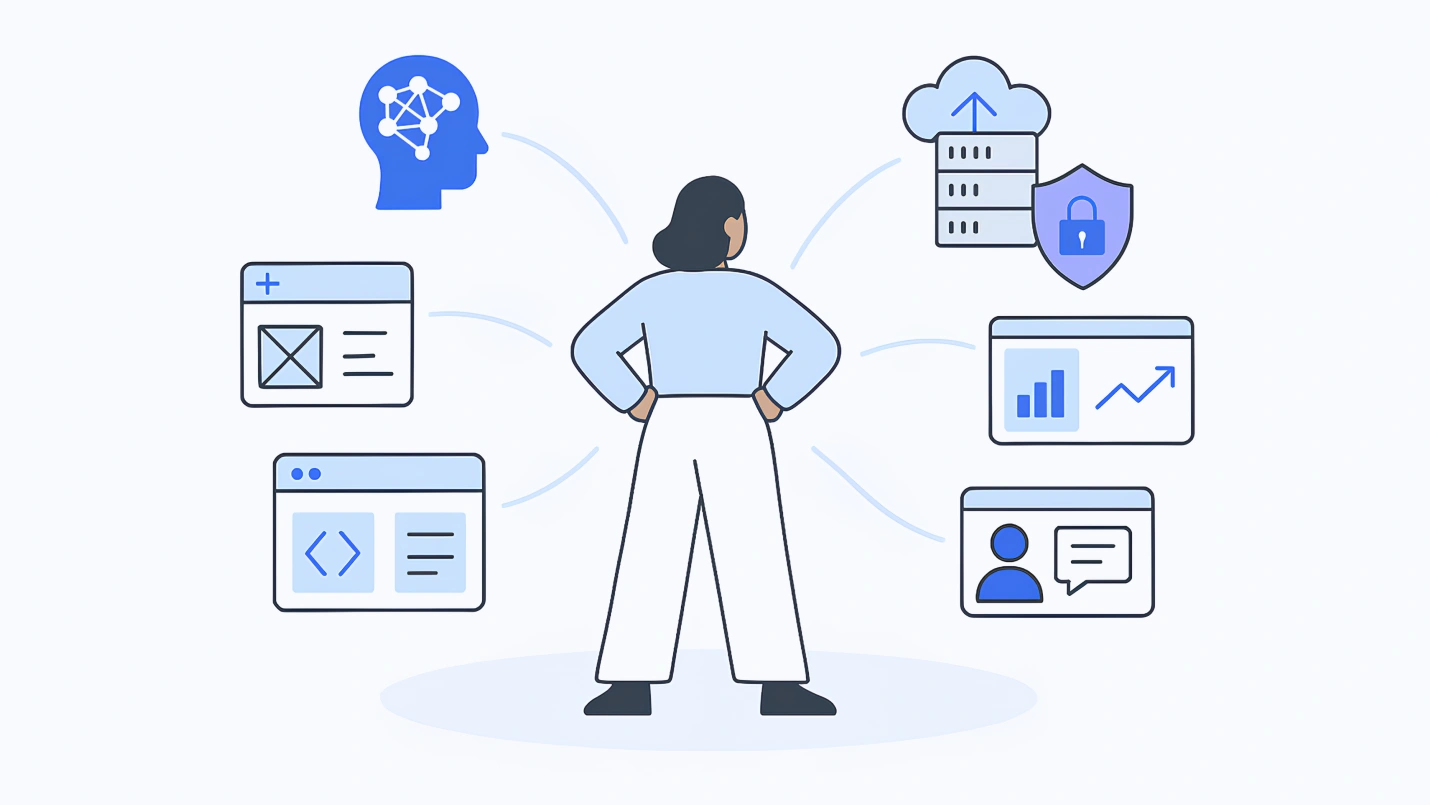In the ever-evolving technology landscape, digital transformation is not just a buzzword anymore. Increasing profitability, gaining a competitive edge, and operating your business with peak efficiency has become necessary.
The stats also show increased adoption of digital transformation among businesses. According to Statista, digital transformation spending is $2.1 trillion this year; by 2026, it will reach $ 3.4 trillion. If you haven’t embraced digital transformation yet, it’s high time you should. But how to ensure your digital transformation journey is a success? For this, you must continually monitor and embrace new digital transformation trends.
In this blog, we’ll discuss 7 emerging digital transformation trends that every mid-sized enterprise must adopt for success. From leveraging the power of artificial intelligence to harnessing the vast potential of the cloud, these trends are tailor-made for mid-sized enterprises like yours.
So, grab your visionary cap and buckle up for a birds-eye view of the emerging digital transformation trends for 2025.
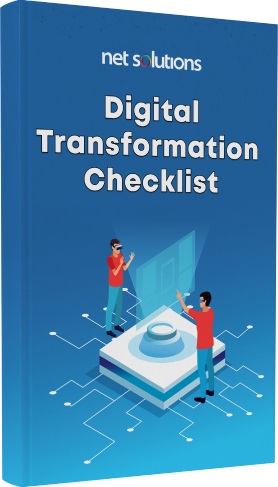
We respect your privacy. Your information is safe.
What Are the 7 Emerging Trends in Digital Transformation?
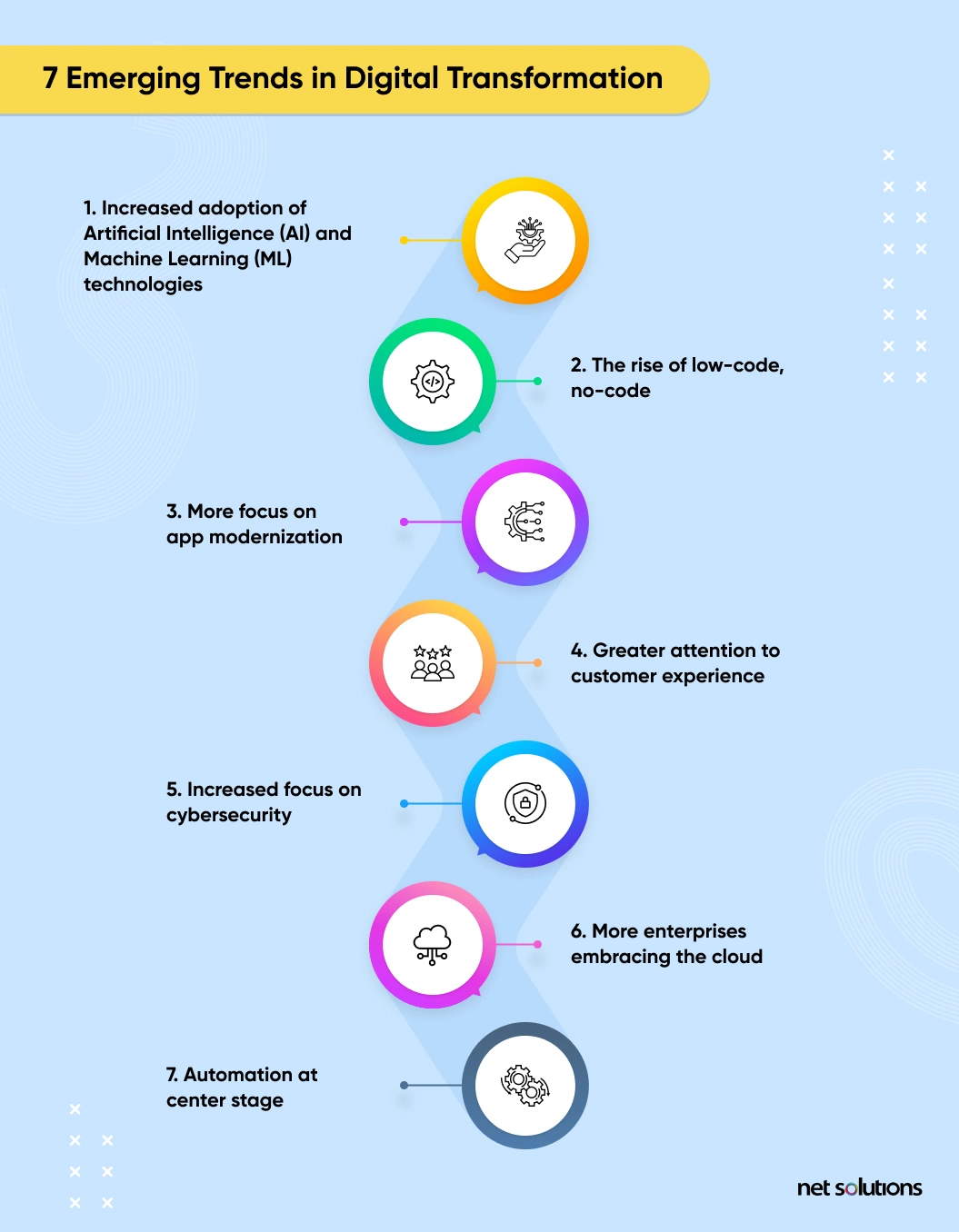
Here are the new trends every mid-sized enterprise must include in their digital transformation strategy this year to be on the winning side in the leaders vs. laggards race:
1: Increased adoption of artificial intelligence (AI) and machine learning (ML) technologies
Customers no longer view speed, efficiency, and personalization as a desired bonus. Instead, they expect each business to deliver on these fronts. However, providing such experiences is beyond the capability of a human team alone and requires enterprises to incorporate AI and machine learning into their digital strategy.
Even the stats indicate the rise of AI and machine learning. According to Fortune Business Insights:
- The global Machine Learning (ML) market is projected to grow from $26.03 billion in 2023 to $225.91 billion by 2030, exhibiting a CAGR of 36.2%.
- The global artificial intelligence (AI) market is projected to grow from $515.31 billion in 2023 to $2,025.12 billion by 2030, exhibiting a CAGR of 21.6%.
AI and machine learning can aid mid-sized enterprises in their digital transformation journey by:
- Automating mundane tasks to save time and reduce labor costs.
- Helping decision-makers make data-driven decisions by identifying patterns, predicting market trends, and providing actionable insights.
- Analyzing customer data and behavior to create personalized experiences.
- Enhancing customer support to handle routine customer queries.
Customer services Chatbots are one of the prime examples of mid-sized enterprises using AI to enhance customer support. They save time and resources by efficiently handling common customer queries, directing customers to appropriate resources, and engaging human agents only when necessary.
Here are other examples of mid-sized enterprises using AI and machine learning:
- The use of Big Data analytics to predict market trends and guide decision-making. By analyzing historical data and customer behavior, machine learning algorithms can forecast demand, identify potential sales opportunities, and optimize pricing strategies. This way, enterprises can optimize their sales strategy quickly and witness better sales performance and revenue growth.
- AI algorithms analyze customer preferences and past purchases to offer personalized product recommendations. Using these algorithms, enterprises can show customers the products they might be interested in buying, thus increasing their sales.
2: The rise of low-code, no-code
The low-code, no-code trend has gained significant prominence over the past few years. According to Gartner, the low-code no-code industry is worth $13.8 billion, and the low-code no-code platforms will account for over 65% of software development by 2024.
Here’s why low-code no-code is so popular:
- Low-code no-code requires little to no knowledge of programming. It means anyone with limited training can use these platforms.
- Low-code, no-code platforms are easily accessible, allow for quick development, and significantly reduce costs.
- The automation features of low-code, no-code platforms help streamline software development.
Here’s what it means for mid-sized enterprises looking for digital transformation:
- Reduced time-to-market
- Lower development costs
- Empowerment of citizen developers
Here are a few examples of how mid-sized enterprises can use low-code and no-code platforms for digital transformation in mid-sized enterprises:
- Creating customer-facing applications to improve the customer experience, increase sales, and reduce costs.
- Automating mundane business processes to streamline, reduce costs, and free up employees to focus on more strategic tasks.
- Creating interactive dashboards and reports that consolidate data from various sources.
- Building Chatbots and virtual assistants to enhance customer support, address FAQs, and automate routine interactions. It increases response time and improves customer support.
3. More focus on app modernization
Over the years, businesses have understood that traditional legacy applications are a significant obstacle to agility and innovation as they’re slow, inefficient, and challenging to maintain. Hence, they’re turning to app modernization.
Here’s how app modernization helps mid-sized enterprises:
- Improve performance as modernized apps are faster than legacy applications.
- Increase agility as enterprises can easily update and modify modernized applications.
- Enhanced security since modernized applications are more secure as they can regularly update with the latest security patches and features.
- Reduced costs as modernized applications are more efficient and easier to maintain.
Cloud migration, microservices architecture, containerization, API integration, and legacy system modernizations are ways mid-sized enterprises can adapt for successful digital transformation. However, here are a few challenges that mid-sized enterprises can face when modernizing their apps:
- Legacy code: Legacy apps are often written in outdated programming languages and frameworks. This can make it difficult and expensive to update them.
- Data migration: Modernizing apps often requires migrating data to new systems. This can be a complex and time-consuming process.
- Integration: Modernized apps often need to be integrated with other systems. This can be challenging, as different systems often use different technologies and standards.
- Cost: App modernization can be a costly undertaking. Mid-sized enterprises need to carefully consider the costs and benefits of modernization before embarking on a project.
- Risk: App modernization can be a risky undertaking. If the project is not adequately planned and executed, it can lead to downtime, data loss, and other problems.
An experienced app modernization services provider can successfully navigate these challenges and modernize apps. Don’t hesitate to contact one if things get out of control.
4: Greater attention to customer experience
As the competition for customers in the digital marketplace increases, organizations have also started paying greater attention to customer experience. Now, they don’t just focus on offering a convenient experience to customers but also personalize it based on their preferences.
Don’t want to be left behind and lose the opportunity to convert a customer because of poor user experiences? Here are a few strategies that a mid-sized enterprise can implement:
- Leverage customer data platforms (CDPs) to unify all customer data into a single view. With all the data centralized and secure in one place, it becomes easy to analyze it and take actionable steps.
- Regularly gather customer feedback through surveys, feedback forms, and social media to improve customer experience.
- Offer a seamless experience across all customer touchpoints, whether in-store, online, mobile, or social media.
- Use loyalty programs (discounts, promotions, and special offers) to incentivize loyal customers.
- Engage with customers after their purchase to check their satisfaction, offer assistance, or provide additional resources related to their purchase.
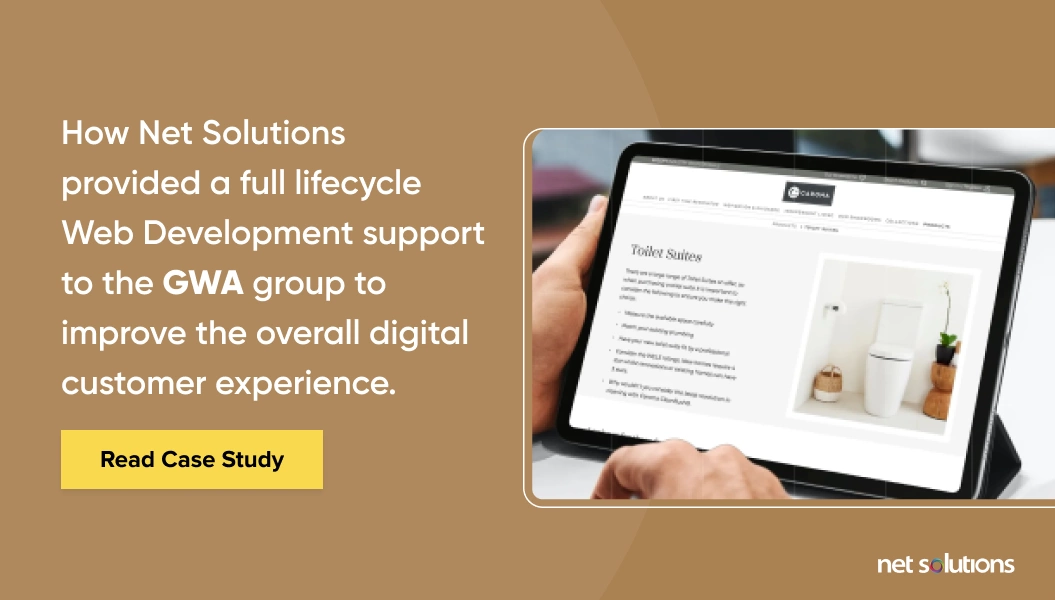
5: Increased focus on cybersecurity
With more and more companies moving their data onto the cloud, data privacy and security have become significant concerns. Hence, they have started focusing on cybersecurity and taking adequate data privacy and security measures.
Here’s why cybersecurity is essential for mid-sized enterprises:
- The lack of proper data security and privacy measures often leads to data breaches, heavy financial losses, and damage to reputation.
- Failing to protect data can result in global compliance issues that may result in heavy fines and penalties.
Cybersecurity has even become more critical as hybrid work has come into prominence. Unauthorized sharing, phishing scams, and cyber attacks have made it challenging for companies to safeguard their privacy.
Here’s how mid-sized enterprises can improve their cybersecurity:
- Keep software up to date to reduce the risk of being attacked.
- Monitor your networks for suspicious activity, such as unauthorized access attempts or unusual traffic patterns.
- Use security measures like firewalls, intrusion detection systems, and data encryption to protect the enterprise’s data.
- Educate employees about cybersecurity and best practices.
6: More enterprises embrace the Cloud
Cloud computing has become one of the fastest-rising digital transformation trends over the past few years. According to a McKinsey report, most companies will allocate 80% of their IT budget toward the cloud by 2024.
Here’s why mid-sized enterprises are adopting Cloud Computing:
- Cost savings as moving to the cloud can save money on hardware, software, and maintenance costs.
- Increased agility as the cloud offers a scalable, elastic infrastructure that allows enterprises to respond to changes quickly.
- The cloud’s wide range of security features and services can help mid-sized enterprises protect their data and applications.
- Cloud providers offer many cloud-based tools and services to help mid-sized enterprises innovate faster.
Here are a few ways midsize enterprises can embrace the cloud:
- Migrating software applications to the cloud through software as a service (SaaS) providers. It eliminates the need to manage the software on-premises, thus reducing costs.
- Moving on-premises infrastructure to Infrastructure as a Service (IaaS) providers like AWS, Azure, or GCP. It would help them reduce capital expenses and maintenance costs.
- Design and develop new applications optimized for the cloud environment.
However, these are some challenges mid-sized enterprises may face while embracing the cloud:
- Cloud security is a significant concern. Although cloud providers offer a wide range of security features, enterprises must understand the security risks and take necessary steps to mitigate them.
- While cloud providers can ease the operations of a mid-sized enterprise, they may also fall prey to vendor lock-in if they’re not careful. As a result, they can’t switch if they’re not happy with the service or the provider goes out of business.
- Some cloud providers may only meet some compliance requirements. As a result, mid-sized enterprises may face compliance challenges.
- Cloud computing can incur more costs than traditional on-premises IT infrastructure, which may stress some mid-sized enterprises financially.
7. Automation takes center stage
Automation is another popular digital transformation trend propelled into popularity this year. According to Salesforce, 95% of IT and engineering leaders prioritize it to break silos, improve customer experience, and enhance productivity. Automation also increases employee satisfaction, as 89% of workers are more satisfied with automation.
What does it mean for mid-sized enterprises looking for digital transformation? Here’s how automation helps them:
- Streamlining business processes
- Reducing manual labor and unnecessary expenses
- Improving both employee productivity and organizational efficiency
In short, automation offers ample opportunities for mid-sized businesses looking to become more productive. By spending less time on mundane tasks and focusing on things that matter, they can deliver value to customers.
Here are a few ways mid-sized enterprises can implement automation:
- Robotic Process Automation: Using bots to automate repetitive, rule-based tasks like data entry, invoice processing, report generation, and customer support inquiries.
- Workflow Automation: Using workflow automation tools to create and manage automated processes like routing tasks, approvals, and notifications.
- Customer Service Automation: Using Chatbots and virtual assistants to automate customer interactions, handle common queries, and provide support around the clock.
- Marketing Automation: Using marketing automation platforms to streamline marketing campaigns, email marketing, lead generation, and customer segmentation.
- Sales Automation: Automate sales processes to enhance lead tracking, deal management, and forecasting.
- IT Operations Automation: Automating IT operations to streamline tasks like server provisioning, software updates, and system monitoring
- Data Integration and ETL Automation: Automating data integration and ETL (Extract, Transform, and Load) processes to consolidate data from various sources, ensuring data accuracy and enabling better analytics.
But here are a few challenges enterprises may face while automating business processes:
- Automating processes that rely on data from multiple sources can be challenging if an organization has various disconnected data silos.
- Automation requires specialized skills and knowledge. Hence, they either need to hire skilled staff or get external help.
- Automation is a significant investment both in terms of money and time. Without planning, it may backfire against them.
- Some employees may resist change and reject the idea of automating workflows.
- Automation can introduce security risks that may lead to costly breaches if not appropriately managed.
How Net Solutions Can Assist You in Adapting to Emerging Digital Transformation Trends
Companies with a well-defined digital transformation strategy can grow faster than their competitors. However, laying out a digital transformation strategy can be challenging with the constantly evolving digital landscape. You need to monitor and adapt new trends to formulate a digital strategy.
As a digital transformation agency, Net Solutions keeps a tab on the new digital technologies and helps you adapt those emerging digital transformation trends to engineer customer-centric experiences for digital transformation.
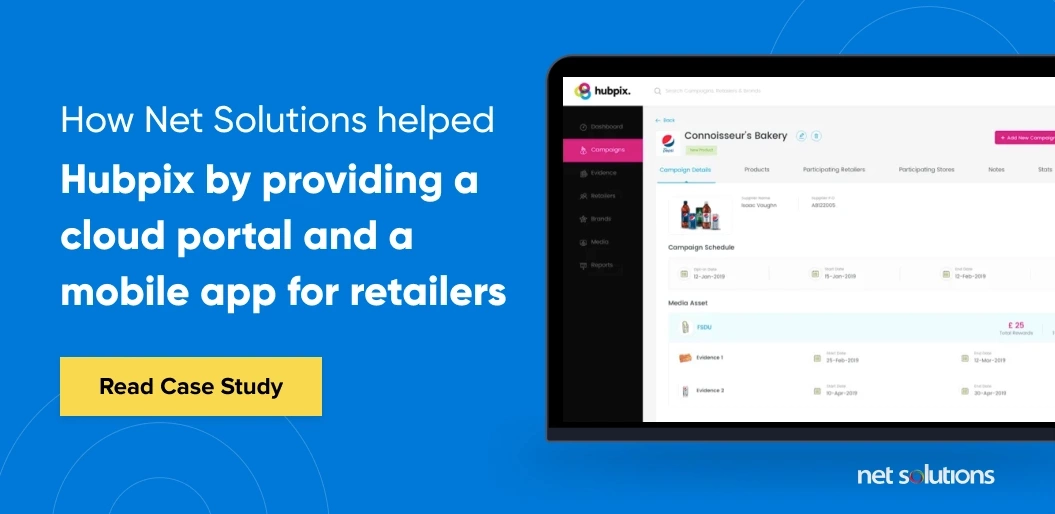
Frequently Asked Questions
Mid-sized enterprises can prepare for digital transformation by undergoing the following steps:
- Step 1: Assess your current IT landscape to identify the scopes for improvement.
- Step 2: Define the goals you want to achieve through digital transformation.
- Step 3: Develop a digital transformation roadmap highlighting the steps you need to take to achieve your goals, a timeline, and a budget.
- Step 4: Invest in new technologies like cloud computing, big data analytics, artificial intelligence, and machine learning.
- Step 5: Upskill your team for digital transformation through training.
- Step 6: Measure the progress of your digital transformation initiative.
- Step 7: Be adaptable as new technologies and trends emerge.
Mid-sized enterprises can measure the success of digital transformation by tracking overall business performance for metrics like sales, profits, and market share. Besides, reduced costs, increased revenue, improved productivity, and increased customer satisfaction indicate that your digital transformation initiative succeeded.
Here are some of the potential costs associated with digital transformation:
- Hardware and software costs
- Consulting fees if an organization doesn’t have the in-house expertise to implement digital transformation.
- Cost of training employees on new technologies and processes.
- Downtime costs if the organization faces technical problems during its digital transformation initiative.
- Regularly review your security policies and procedures
- Encrypt your data at rest and in transit
- Use two-factor authentication (2FA)
- Have a firm security policy
- Monitor your network for threats
- Have a plan for responding to security incidents
- Keep your software up to date
- Train employees on security best practices

